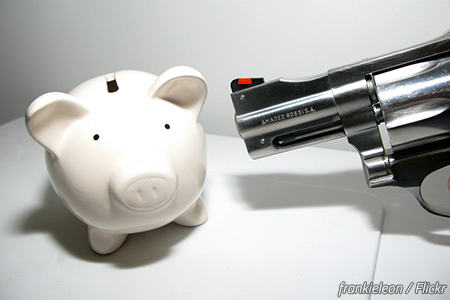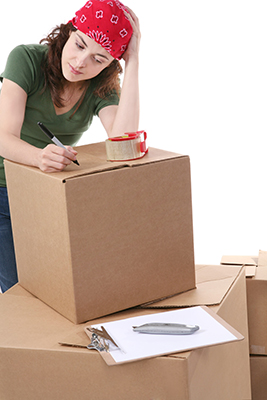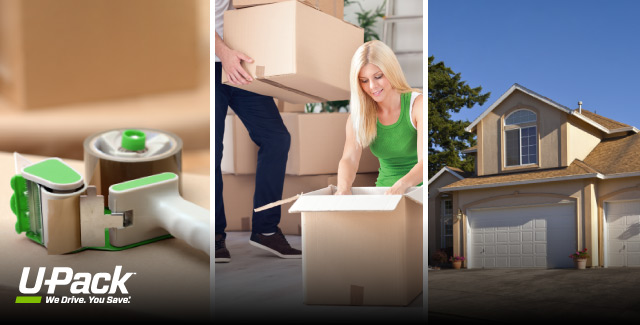Thanks to the shorter move distance between the two homes, moving short distance will always be a faster house moving experience than moving long distance. So far, so good. More importantly, though, the major pre-move questions that will probably keep you tossing and turning in bed are, “Is moving locally easier?” and “Is moving short distance cheaper?”.
It’s hard to answer those puzzling questions without having enough analytical data to gather and process. Depending on how you choose to approach your local move (moving on your own or hiring a local moving company), the number and nature of the items you intend to move, and the way you organize your preparation period, your upcoming short distance move can range from being largely problem-free, through fairly problematic, to even nightmarish.
Read this short distance moving guide to learn how to find a great professional partner from the best short distance movers near you, as well as how to use the best short distance moving tips to your advantage – the only two actions that will guarantee the success of your local moving endeavor.
What’s the cheapest way to move short distance?
It should come as no surprise that everyone’s desperately looking for the cheapest way to move house – after all, residential moving has the bad reputation of being too expensive in the first place. And if you’re about to move locally soon – regardless of whether your destination home is located just across the street, in another neighborhood within the same city or town, or in another city within the same state, then your main objective should be more or less the same – to save as much money as possible on your short distance move by using a number of proven cost-reducing techniques.
Depending on your special set of circumstances, the cheapest way to move locally for you can be:
Moving locally by yourself + friends
To move house within the state of origin and inside a radius of around 100 miles presents a viable option for people to rent a moving vehicle from a local truck rental agency, pack their belongings, load them into that rented vehicle with the help of a few good friends, and drive the loaded truck to their new home.

It’s nice to have friends to help you move house. And it’s even nicer if you can save money on your short distance move too.
Self-moving can be a cheaper alternative to hiring one of the short distance moving companies in your area if
- you have reliable friends who you know won’t back down on your in the last possible moment;
- you have moved house before and know what it takes to go through a seemingly endless checklist of move-related tasks;
- you know you have good packing skills that won’t let you down;
- you’ve been recommended a reputable and affordable truck rental company in your city, or a pal of yours has agreed to lend you their pickup truck for the day;
- you don’t own too many household items and there are no special items among them – specialty items that will require special packing services.
Short distance moving services
The great news is that it’s quite possible to use professional short distance moving services and still keep the relocation costs within reasonable limits. The trick to achieving that seemingly impossible feat is to
- find a low-cost short distance moving company that will do a decent job of protecting and transporting your household items,
- find the perfect balance between doing some of the tasks by yourself and leaving the tougher jobs of the local move to the pros, and
- use clever cost-effective strategic moves to bring down the final price even more.
The easiest way to move short distance is to hire trained professionals to do the entire work from start to finish while you take advantage of the free time to do the things you would not have time to do otherwise. It’s a good feeling to know that you can trust a bunch of experts to disassemble, pack and transport your large furniture pieces (
antique furniture as well), as well as to protect well and move safely some valuable items that fall into the
Special Items category –
pianos,
pool tables, or
hot tubs, for example.
Getting in touch with short distance packers and movers sounds like a brilliant idea then, doesn’t it? Well, it does, if you can afford to hire the services of such a quality local mover.
Short distance moving costs
If the preliminary analysis points to a self-moving approach to your upcoming local move, then it’s important to note down that you will find it extremely hard to calculate the DIY costs properly before the relocation takes place. This is due to the fact that in addition to the expenses of renting a vehicle from a trusted moving truck rental company in your city or area (plus fuel, insurance, parking fees, road tolls), you will quickly be reminded of
the forgotten costs of moving on your own – packing materials (mostly cardboard boxes to pack up your things), renting moving equipment, food and drinks for your helpers, possible property damage and personal injuries, and so on.

You don’t have to kill all of your savings to do a short distance move.
On the other hand, whenever you choose to use the professional services of a local mover, the short distance moving costs are much easier to be calculated simply because the company will give you a price estimate before the move happens. It’s easy, really – after asking for in-home consultations from several top-rated short distance movers in your city, you will receive local moving quotes to compare.
In-home visits constitute an important part of the moving process as they give you the opportunity to 1) discuss the move details with local movers’ experts, 2) show movers exactly what it is that you intend to have packed and moved, 3) let them know of any peculiarities that could make things tougher for them on moving day and inflate the costs, and 4) get short distance moving estimates to know what to expect price-wise from your local movers.
How to compare movers? Use our special-purpose
Moving Companies Comparison Chart with 25 comparison points that should help you pick the best short distance moving company
for you in no time at all.
How much do short distance movers cost?
The only good way to know how much your short distance move will cost you is to
request accurate price estimation from 2-3 local moving companies. This is the right way to go because each residential move has
different parameters that will affect the final price
differently.
Still, if you wish to know the average moving cost when moving locally as a reference, here are the main things you should be aware of:
- Short distance movers usually charge their customers by the hour which basically means that, all of a sudden, the time factor becomes more important than ever.
- The average short distance movers cost is roughly $25-$40 per mover per hour – the exact amount depends on the local mover, your location, and time of year.
- You may be charged a travel fee that will amount to 1 extra hour of work. The travel fee is viewed as compensation for the time the local moving crew needs to reach your home.
- The more items you have in your home, including some special items that will require extra efforts from your local movers, the more time will be needed to finish the job. Also, each extra moving service you request will prolong the moving process. And as you well know, more time means more money.
- Roughly speaking, studio apartments require 2 local movers to work 3 hours to finish the moving job, 2-bedroom homes = 3 movers + 5 hours, and 3-bedroom homes = 4 movers + 7 hours. Keep in mind that while these approximate calculations might help you get a preliminary idea of what to expect, there’s only way sure way to know how much your short distance move will cost – the short distance moving quotes.
How to find the best short distance movers near you
If you really want to make sure you hire absolutely the best short distance mover, then you may as well follow our 31.5 step guide on
how to choose the right moving company at the right moment. Feel free to follow those steps to guarantee a smooth local move without any major problems.

It’s no secret that some short distance movers are better than others. Don’t make compromises while trying to find the best local mover.
Get short distance quotes. Compare the offers and the companies that have made them with great care. With a few local moving estimates in your hands, choosing the best short distance mover that will fit your moving budget and satisfy your relocation needs will usually turn out to be a no-brainer.
- Do not hire a mover on a random principle – always start your search for reputable movers with a thorough research on their online reputation. Before choosing your local moving company, read moving reviews and testimonials regarding their services. The last thing you would want is to be scammed in any way by a dishonest local mover – learn how to stay protected when moving short distance.
- Check out the licensing information of short distance moving companies with the U.S. Department of Transportation (USDOT number), take a look at their records with the Better Business Bureau (BBB) and see if they are members of the prestigious American Moving and Storage Association (AMSA).
- Before making your final decision to hire a specific local moving company, ask friends, relatives, colleagues or neighbors if they can give you any positive or negative feedback about the movers you have pre-selected. After all, advice works in mysterious ways and you never know who can come up with a precious last-minute tip.
- Once you get in touch with a short distance mover, take your time to learn more about the company. Call them up and voice any concerns you may be having regarding the upcoming move. The personal interaction with them will tell you a lot about their level of professionalism and how trustworthy they really are. Their answers should be clear and easy to understand, without any attempts to withhold information or elude your questions. You have the right to obtain any information that is relevant to your local move, and the best short distance movers should do anything in their power to satisfy their customers and make their relocation smoother.
- Be sure to ask your short distance movers about possible ways to lower the moving costs, such as ongoing relocation promotions, specific discounts and so on. Why pay more when you can pay less for the same moving services, right? With a little luck and some prudence, you can select relatively cheap short distance movers.
Short Distance Moving Tips
You can play an active role in keeping the local moving costs as low as possible by using money-saving tips, time-saving tips, and proven packing tips when moving short distance.
Start early
Start the moving preparations early and approach the entire relocation with the same seriousness as if you were relocating across the country. The term “short distance” alone should not give you false hope that your move will be so much easier because it’s a local one. In fact, if you underestimate the whole moving situation, you could end up with a stronger headache than ever.
Under ideal conditions, you will have no less than 2 full months to get everything ready for the move, but often 8 weeks will be a time frame you can’t really afford. Be aware of the fact that the less time there is until the moving date, the faster time will seem to pass.

Start early, pack in stages and label your ready boxes accordingly.
Inventory, sort out and purge
Your local move is a very opportune moment to decrease the number of your household items by carefully sorting them out – a perfect opportunity to inventory your entire home and move only the things you will need and use. The purging process you’re advised to initiate will serve three distinctly beneficial purposes:
- Money: you will save big on your short distance move if you move only the necessary stuff simply because the more items there are to be packed and move, the more money you will have to pay your short haul movers due to the prolonged time.
- Space: the living space of your new home may be smaller than your soon-to-be-old one, but even if it’s not, ask yourself if you do want to clutter up your new apartment or house so quickly after the move.
- Decluttered mind: it’s not a secret that too much stuff around you could bog down your mind, so purge your home to free up your mind too.
Be an efficient packer
How to pack for a short distance move? Unless you’ve opted for a full-service move from your short distance movers, you’re going to have to pack your things yourself. Even so, you may still request that your most fragile and valuable items (dishes, glasses, delicate electronic equipment, etc.), as well as your most heavyweight and bulky goods (furniture pieces, kitchen appliances, etc.), be packed by professional packers for a guaranteed problem-free transportation to your new residence.
Usually, you will be facing a painfully long and somewhat boring packing stint. What can you do to make packing more efficient?
- Get suitable packing supplies. First of all, you should get your hands on moving boxes in good condition. One of your options is to purchase new moving containers from your selected short distance moving company, and if you can afford it, you should do it. However, there’s a much cheaper way of obtaining cardboard boxes for your local move – either ask friends or coworkers if they have such boxes and are willing to spare them, or visit some big local businesses (supermarkets, bookstores, etc.) and see if you can get them for free. /Where to find free moving boxes?/ And then, when it comes to packing paper and packing tape, buy them from your movers or from the nearby office supply store.
- Pack in logical stages. one thing is clear – you won’t be able to pack your entire household in one day. Therefore, you need a working packing strategy in order to finish the preparations on time. Start packing from the rooms you use less and continue towards the ones you use every single day. That way, you won’t clutter unnecessarily your working space and will make progress much faster.
Call for friendly backup
A short distance move is the type of relocation where reliable friends can offer the biggest help – not only during the busy period of getting ready for moving day, but on the moving day itself. If your new house or apartment is a short distance away, you may as well consider executing a self-move with the help of some good helpers, of course. See if any of your pals will be willing to give you the much needed helping hands in exchange for your eternal gratitude and some delicious pizza and refreshing drinks.
/Let friends help you move!/
For a complete short distance moving checklist and more ideas to save money, time and efforts during your short distance move, be sure to check out this example
week-by-week moving timeline.









 You never can tell what will occur on the road during a long distance move, and this is exactly why the American Van Lines takes precautions to keep your items safe. We know that prevention is better than repair, so we keep our trucks in tip-top shape with regular maintenance. All of our moving trucks are modern and equipped with air-ride suspension to sustain a smooth, turbulent-free ride to your new home. Every moving truck is spacious, safe, modern, clean, and serviced regularly. Reliability is one of the most pertinent features of outstanding moving services and it is a chief ingredient in our formula for success.
You never can tell what will occur on the road during a long distance move, and this is exactly why the American Van Lines takes precautions to keep your items safe. We know that prevention is better than repair, so we keep our trucks in tip-top shape with regular maintenance. All of our moving trucks are modern and equipped with air-ride suspension to sustain a smooth, turbulent-free ride to your new home. Every moving truck is spacious, safe, modern, clean, and serviced regularly. Reliability is one of the most pertinent features of outstanding moving services and it is a chief ingredient in our formula for success.
